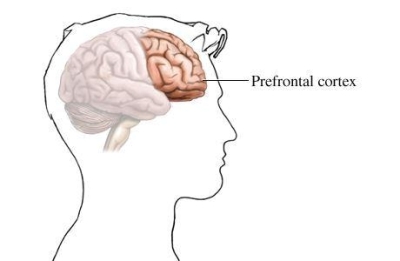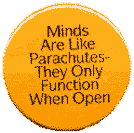I've always been fascinated by how the brain works and
how we can try to get the best out of our brains, or more specifically: how we
can get the best out of our minds.
In recent years science has revealed that our brains
are much more pliable and adaptable than previously thought and the more
understanding we have of the neurophysiology of the brain the more ways we can
develop to manipulate that physiology or: train
the brain.
Last week I started reading a book called The Willpower Instinct by Kelly McGonigal,
Ph.D which is based on her very successful course at Stanford University called
‘The science of willpower’. In this book she relates the biological basis of
willpower to the scientifically validated methods of improving willpower – i.e. how to train the brain to have more willpower.
Last week I also watched a science program on TV by the
Horizon team called ‘The Creative brain – how insight works.’ The program
followed several different groups of psychologists and neuroscientists around
the world who are researching into the science of creativity. The advent of MRI
scanning has revolutionised the study of the active brain enabling the
understanding of human behaviour in relation to creativity to make great leaps
forward. The program not only revealed what is happening in the brain when we
have those ‘Eureka’ moments when our brains take a big creative leap forward
but also how to manipulate those processes to make those moments more likely to
happen – in other words, how to train the brain to become more creative.
Training the brain to enhance the processes that
naturally occur in them is something that we already do in martial arts isn’t
it? I was struck by how similar some of the strategies Dr. McGonigal advocates
in her book to enhance willpower are things that martial artists interested in
the more esoteric aspects of their art have been doing for centuries, they just
haven’t understood the scientific basis of why they work!
In the book Dr. McGonigal advocates breath control to activate
the pre-frontal cortex (the seat of willpower) and enhance heart rate
variability which shifts the body and brain from a state of stress to one of
self-control. The breath should be slowed down to about 4 – 6 breaths per
minute for a few minutes. This apparently is very effective if you do it just
before you face a willpower challenge – i.e. when deciding whether to eat that
cream cake or whether to go to the gym after work for instance.
In martial arts terms we use breath control during the
execution of kata and other techniques. Is this to enable us to maintain a high
level of self-control and focus during the technique? After all, the self-control we need during
martial arts training is also a pre-frontal cortex activity.
Dr. McGonigal also advocates meditation as a means of
enhancing self-control and willpower. Seems
like martial artists were first there with this one as well. Science has
shown that five minutes of meditation based on breath focus reduces stress and
teaches the mind how to handle both inner distractions (cravings, worries,
desires) and outer temptations (sounds, sights and smells). It is a powerful
brain training exercise. Studies have shown that people who learn to meditate
for 10 minutes a day become more focused on their daily tasks throughout the
day.
I’m only part way through this book at the moment but I’m
hoping it’ll reveal even more useful insights into how the mind reacts to willpower
challenges and tips on how to improve self-control. By the way Dr McGonigal
lists a huge range of scientific references to support her claims. Why not read
the book yourself?
Interestingly the science programme on the creative
brain also talked about the pre-frontal cortex – except in the complete
opposite terms. To be more creative you have to switch off the pre-frontal
cortex as it exerts too much control over your thinking – it makes you
analytical rather than creative and inhibits you from thinking outside the box.
Creative thinking, particularly insight, i.e. those moments when the answer to the problem just
pops into your head from nowhere (seemingly) resides in the right side of the
brain. In tests, when people were given clues to a puzzle they were far more
likely to get a ‘Eureka’ moment with the answer if the clues were presented to
the left visual field rather than the right (information from the left visual
field is processed by the right side of the brain).
Furthermore, MRI scanning of the brain during problem
solving has shown that insight is not an instantaneous thing. In the seconds
before the answer pops into the conscious brain there is rapid firing of alpha
waves in the visual cortex (temporarily shutting it down) followed by a burst
of gamma waves in the right side of the brain near the temporal lobe – then the
idea pops into consciousness and you experience your Eureka moment. In fact the
subconscious brain has been collating information about the problem from
several areas of the brain, this is why it shuts off the visual cortex to avoid
distractions from the outside world and down regulates the pre-frontal cortex
(to stop you from consciously controlling the process and thus slowing it
down). Fascinating isn’t it?
Apparently if you are too intelligent and controlling
with your thoughts i.e. over analytical about problems you tend to have more
ordered pathways in the brain and are less able to think divergently about
problems. Less intelligent people tend to have more scattered pathways in the
brain and are better at divergent thinking and more likely to have moments of
creative insights. Remember, sophisticated MRI scanning and imaging during
psychological and problem solving tests has concluded these findings – don’t
just take my word for it, watch the programme on BBC I-player if you can.
It appears that our brains work faster when we are not consciously
controlling them. In martial arts we already intuitively know that don’t we? We
know that in a fight we should let the training take over and just react –
muscle memory will do the rest- right? If we over-analyse a situation and try
and make lots of conscious decisions about which technique to choose we become
too slow and hesitant and will probably lose the fight. We need to switch off
the pre-frontal cortex in order to fight effectively.
To illustrate that fact for a moment: in the creative
brain programme they had a seriously good improvised jazz musician improvise a piece
of music whilst his brain was scanned in an MRI scanner. Remember he was making
this music up as he went along and it was good and it was fast. Many areas of
his brain were lit up – except the pre-frontal cortex which he had almost
completely switched off. His fingers just did the talking over those keys, no
conscious brain allowed!
Where does all this leave us in martial arts? You need
your pre-frontal cortex switched on to train so that you can stay focused, in
control and build up that muscle memory (which resides in the brain remember!).
However, to fight, you need to switch the pre-frontal cortex off and let the
sub-conscious brain take over. Martial arts are as much about brain training as
body training – this is why we ignore the more esoteric aspects of our art at
our peril. It’s not enough to just learn techniques – we have to understand how
our brains work and train them too.
We need to learn how to switch our pre-frontal cortex
on and off, like a light switch…
References: The Willpower Instinct – how self-control
works, why it matters, and what you can do to get more of it. Kelly McGonigal,
Ph.D
Horizon: The Creative Brain – how insight works.
Available on BBC i-player.

This work is licensed under a Creative Commons Attribution-Noncommercial-Share Alike 2.0 UK: England & Wales License.







